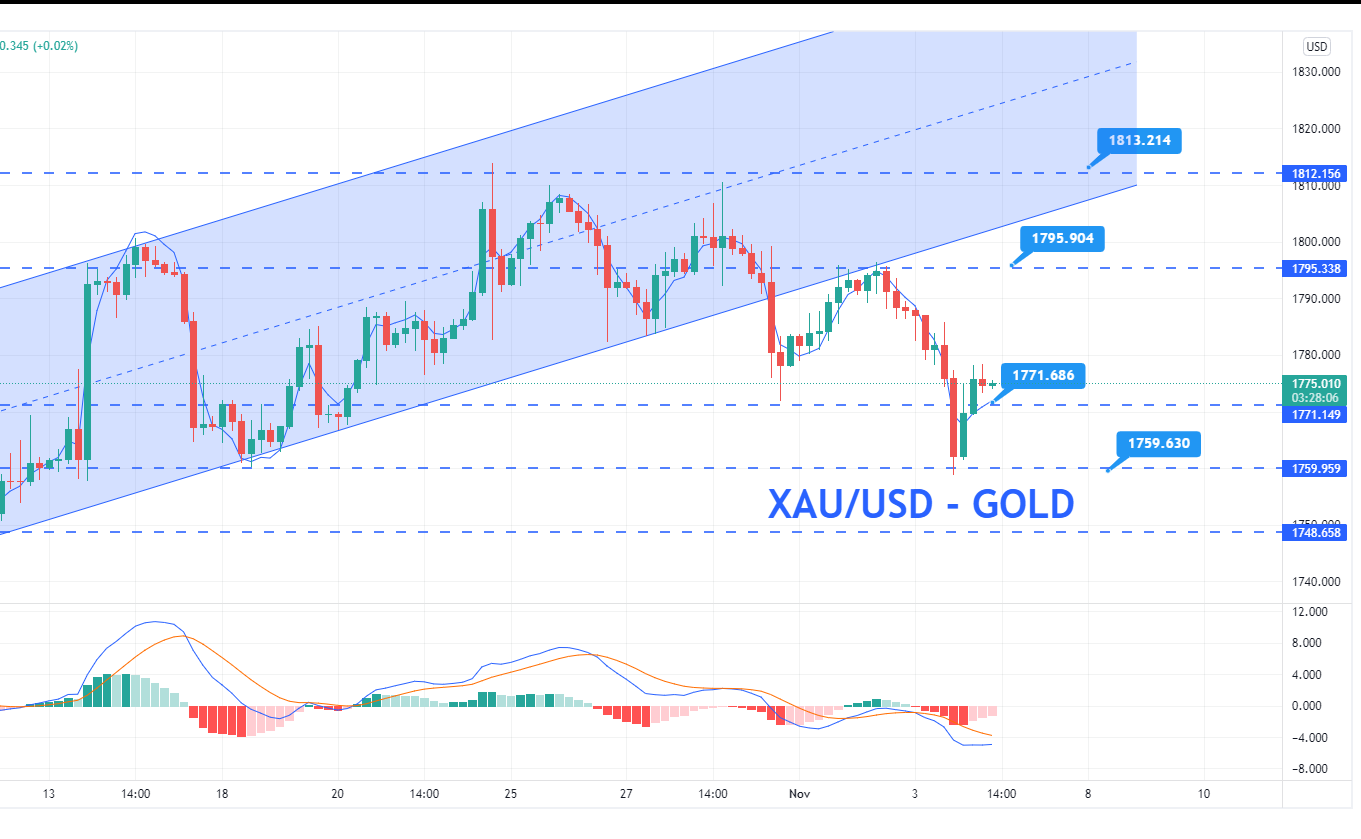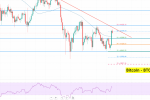Gold Slips to $1,776, amid Hawkish FOMC & Tapering Concerns

Gold Slips, Gold prices closed at $1,763.90, after reaching a high of $1,789.30, and a low of $1,758.50. Gold extended its decline, dropping its lowest level since October 13 yesterday, amid the strength of the US dollar, after the release of the monetary policy report by the Federal Reserve.
The US Dollar Index, which measures the value of the greenback against a basket of six major currencies, rose to a high of 94.21 during Wednesday’s trading session, but could not remain there for long before reversing its course to the downside. The yield, on a 10-year US Treasury note, increased to 1.60%, adding to the strength of the US dollar and weighing on gold prices.
The US dollar was strong across the market, as the US Federal Reserve announced tapering of its pandemic-era stimulus measures, in a widely expected move. In a statement released after the end of a two-day meeting, the Fed said that it will start trimming its monthly bond purchases in November, with plans to end them in 2022.
Gold Slips
Gold Slips, The ultra-loose monetary policy of the US has helped to drive gold prices upward sharply since the start of the financial crisis of 2020, as low-interest rates and inflation fears increase the demand for a hedge. In the statement, the Fed also pointed to the recovery in terms of economic activity and employment, while stating that inflation would prove transitory, and it was likely that a fast rise in interest rates would be necessary.
On the interest rate front, the US Fed and its Chief, Jerome Powell, remained true to their script, maintaining that they were in no hurry to raise interest rates, even if inflation was running well above the central bank’s 2% target.
On the data front, at 17:15 GMT, the ADP Non-Farm Employment Change came in, reflecting a surge to 571K against the forecast of 400K. This supported the US dollar and put further pressure on the gold prices. At 18:45 GMT, the Final Services PMI was released, showing an increase to 58.7, against the projected 58.2, which supported the greenback and added further to the losses in gold. At 19:00 GMT, the ISM Services PMI came in. It surged to 66.7, against the anticipated 61.9, dragging the prices of the yellow metal further down. Factory orders remained flat, in line with the expectations of 0.2%.

Gold Recovers to $1,776, after falling to $1,759
Price activity of the XAU/USD pair remained around the $29 range, reaching a daily low of $1,759 before stabilizing at present levels. The daily moving averages (DMAs) remain above the current price, but with a flattish slope, indicating that gold is in a sideways trend. Furthermore, the yellow metal is reaching the previously specified levels, indicating that the negative bias is dissipating. Nonetheless, a clean breakout over the 200-day moving average (DMA) of around $1,800 might keep the gold bulls in command. In that case, the July 15 high of $1,834 would be the first point of resistance, followed by an empty road towards $1,900.
In contrast, if the USD bulls want to maintain dominance; they must keep prices below the 200-day moving; average. In that case, the first level of support would be the November 3 low of $1,759. A breach of the latter would reveal a rising upslope trendline, running from the lows of August 9 to the low of September 29, within the $1,740-50 range.






